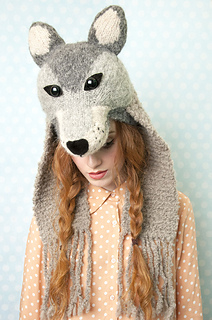If you aren’t, it’s basically an organizer. The system itself makes use of regular kinds of markings to indicate tasks, events, etc. But for me, there are two things that make bullet journals fundamentally different from the classic kinds of organizers I’ve bought at the Office Pr0n store* and then never actually used:
- You buy a plain notebook in your desired size and figure out the layouts yourself, based on what it is that you want to keep track of. You can have a calendar, or task percent bars, a ledger to track spending, a calorie tracker, and so forth – whatever it is you want to track.
- You decorate it: colored pencils, pens, paint, washi tape, with hand-lettering or stamps or patterning – there’s a zillion ways to go about it.
I think in hindsight that this was all probably a horrible attitude brought on by the inspirational quotes which, to a large part, make my skin crawl, perhaps due to overexposure in the workplace. ** And I’m probably definitely jealous of the artwork.***
But the bullet journal concept started because a person with autism (Ryder Carroll) needed to keep track of stuff (full story here), in a way that tied what he wanted to achieve with why he wanted to achieve it – that constant linking of what and why kept him stocked up with motivation. That story caught me: I think I’m probably on the spectrum, although I’ve never been diagnosed, and recently I’ve had ever more trouble trying to keep track of stuff, to the point of acute emotional distress. Plus, I am 100% ALL IN on the idea of the importance of why (see Simon Sinek’s “Start With Why”).
So what the heck, thinks I, I’ll try this out. I bought a notebook, came up with a rudimentary layout based on a really basic description of two-page layouts (so that the entire conceptual element – such as a week – is visible at once).
 |
| One-week spread |
The Plot
Using a plot frees up your brain from these mundane, computer-friendly tasks, to do the things that the computers (or charts) can’t do: identifying patterns. Recognizing behavior. Using observation & intuition to tell a story that you use to make tactical decisions and to anticipate future needs & actions. Thinking about the “what-ifs”, especially “what if I’m wrong about this?”. If you are spending all of your time trying to do the math to figure out if you’re still positioned where you’re supposed to be, or within a weapon range, or whatever, you will forever be behind the problem, struggling to keep up. You’re going to miss stuff, and it’s probably going to be dangerous.
This has been exactly the problem that has been causing me so much distress. I have a lot to do – the work is complex and involved and I have to keep track of a zillion tasks, most of which cannot be completed without some kind of follow-up, which is yet another task. I’ve been trying to keep track of this mentally – no wonder I’ve been so extremely anxious about forgetting stuff. No wonder that, up to this point, feeling like I’m on top of my tasks list has filled me with the dread certainty that it’s only because I’ve forgotten something (and I almost always have). My brain is simply not wired to keep track of a large quantity of tasks like this, and I’ve been trying to force it to, and that has not been working out well for me. I’ve been missing stuff, and it’s definitely been painful.
My bullet journal is my plot. It is extremely good at holding lists of tasks. Moving that list out of my brain and into the journal frees up my brain to actually think about things and especially to be creative, which is something that the crushing need to track tasks – and the attendant anxiety – had up to this point killed in me.
My journal is pretty simplistic, but that’s because I’m trying to maximize the space so that I have room to write down my tasks. I write in something like 4-pt lettering and I will fill each of those day boxes completely full with tasks. So I don’t have room for full- or half-page illustrations or motivational quotes at this point and I’m fine with that. Other people do, and that’s just fine, too.
It’s All About Dat Art
In Conclusion
* Staples, Office Max, Office Depot, whatever.
** And which probably explains my perverse love of demotivational posters.
*** I have a Bachelor’s Degree in Fine Arts and have not really truly used it – at least not for painting – in 20 years, as is probably obvious. Some of the art I’ve seen in Googling about bullet journals is absolutely gawwwjus










